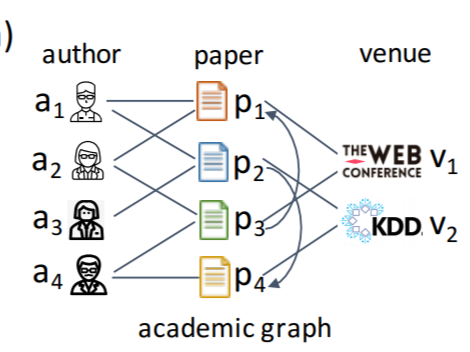一下子第二个十年就过去了,一下子自己也不是那个可以什么都不顾的少年了。照例,记录下自己现在的思想。
离异
小时候,每次别人问起我,我都是面无表情地告诉他们我爸妈在我很小的时候就离婚了。而往往他们会给我一个惊讶转而同情的表情或言论,而我都是以一句“没关系”结束这个对话。
因为我是真的觉得爸妈离婚对孩子,至少对我来说,是没有什么大的影响的。我爱历史爱读书,所以读到了那么多可以为榜样的人物,那么多荡气回肠的人生故事,对我来说,爸妈离婚真算不了什么大事,古往今来挫折失败实在太多太多,人生就应像我的偶像苏东坡一样,活得率性就足够了。
可是这段时间我才觉着我错了。爸妈的离婚不是什么挫折,而是一个洞,一个精神我中的一个洞(物理我的洞就是。。。比克大魔王死的时候那样?哈哈哈哈哈哈)。虽然朋友知道的我是个大大咧咧率性乐观的人,但是我知道,这样的我,是初中以来自己慢慢调整过来的我。其实初中以前,我一直都是一个比较内敛感性的人,而最近的时间我才发现其实初中那个沉闷的小男孩还一直活在我心里,那个渴望疼爱、但是又战战兢兢不敢表露自己的小男孩一如既往,希望有个人能理解,能疼爱。
很早明白人生是一个人的旅程,但是看着别人,似乎觉得这句话不太对,别人的爸妈那么恩爱,和爸妈就像朋友一样,也有一个精神同样强大的伴侣互相扶持。所以其实,应该是我的人生,是一个人的旅程。从小学到中学,到大学,到现在,甚至到未来的博士,一想到这就好难受好难受,爸妈离婚了,他们有各自的家庭,我属于他们各自的家庭,也可以说我不属于任何一个家庭。朋友很多,但是曾经自以为的知心好友并不觉得我是什么好相处的人。而也太难有一个愿意去美国的对象,就算有也太难有一个能填补我这个洞的人了。
明白了这些,越来越对婚姻产生恐惧。害怕自己找不到对象,害怕找到对象后一直吵架然后离婚,又对自己的孩子挖了一个洞。。。从来没有享受过一个和谐温暖的家,我都不知道我有什么想象力和能力去propose一个那样的家。。。
油腻
这是一个很严肃的话题。我发现我开始变得油腻:一个油腻中年人的样子。
这次去南科大早说约好请明远一顿海底捞,路上碰到几个南科大同组的本科生于是邀约一起海底捞,最后他们要给我钱的时候,我拒绝了,嚷嚷着什么没事我请了。
拒绝完没觉得怎么样,但是晚上想到这件事,不知怎得就觉得自己是第三视角的一个路人,在冷眼看着一个油腻的中年大叔上演着那熟悉的套路:以钱财请客来彰显自己的能力。不觉一阵干呕。我试着缕清自己的行为为什么违背了自己的理想状态, 这件事上,我对“大方”产生了误解,人要大方要舍得,有舍才有得,但是大方不是通过不讲道理的请客来彰显自己的“大方”的,这样的行为,扪心自问,是想做一个大方的人吗,呵呵,只是像那些中年人一样,以此想彰显自己的能力,满足自己的虚荣心罢了。所以何为我们应该做的大方?当理应你请客,比如明远这个,大大方方,别扭扭捏捏就好,抑或是日常的小事物,或者朋友主动找上你需要你帮忙,这些东西便是大方的时候。
不仅仅是这件事。最近的许多事,都让我觉得我在渐渐从那个执剑的勇士,变成那条自己厌恶的恶龙。这样的反省肯定来得及,愿我出走半生,归来仍是少年。真的希望自己过了半辈子的时候,还保持着现在这样的少年感。
选择
最近看一位高中老师讲话的视频深有感触。
老师说,他羡慕孩子们,不是羡慕多年轻不是羡慕高中多美好,而是羡慕他们还有选择人生的机会。对啊,不是说现在的我们就不能选择自己人生了,只是说比起高中刚毕业还没选专业的时候,放弃自己现在的人生去做自己喜欢的事,代价太大,难度也太大了。不过我也不是那种不幸的人,至少现在的路我觉得挺好的,人生在世,大不了以后去当个高中老师,照样是教书育人,岂不美哉。
只是也可以感慨一下,如果没来中大学计算机,应该就是在上交当记者了。其实想想,记者/主持人这样的职业也是很适合我的。我一直自诩是一个正义积极、乐意为民请命的人。不过可能真当了记者,面对的冲突会比起现在仍然“象牙塔”般的研究来的大得多,另一个平行时空的我,希望别成为那个恶魔。。
2020
2019就这样过去了,遗憾就如太阳升起一样,照例还有。
2020最大的希望,是自己还是那个率性的少年,真诚待人,不要,一定不要成为自己厌恶的人。
然后就是继续加油,沉下心来学东西,做东西。晚上也早点睡,注意一下饮食,多吃点水果,多玩玩健身环,毕竟身体真的是革命的本钱哪。
